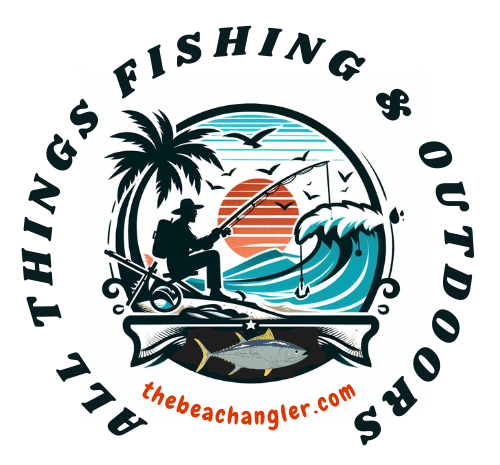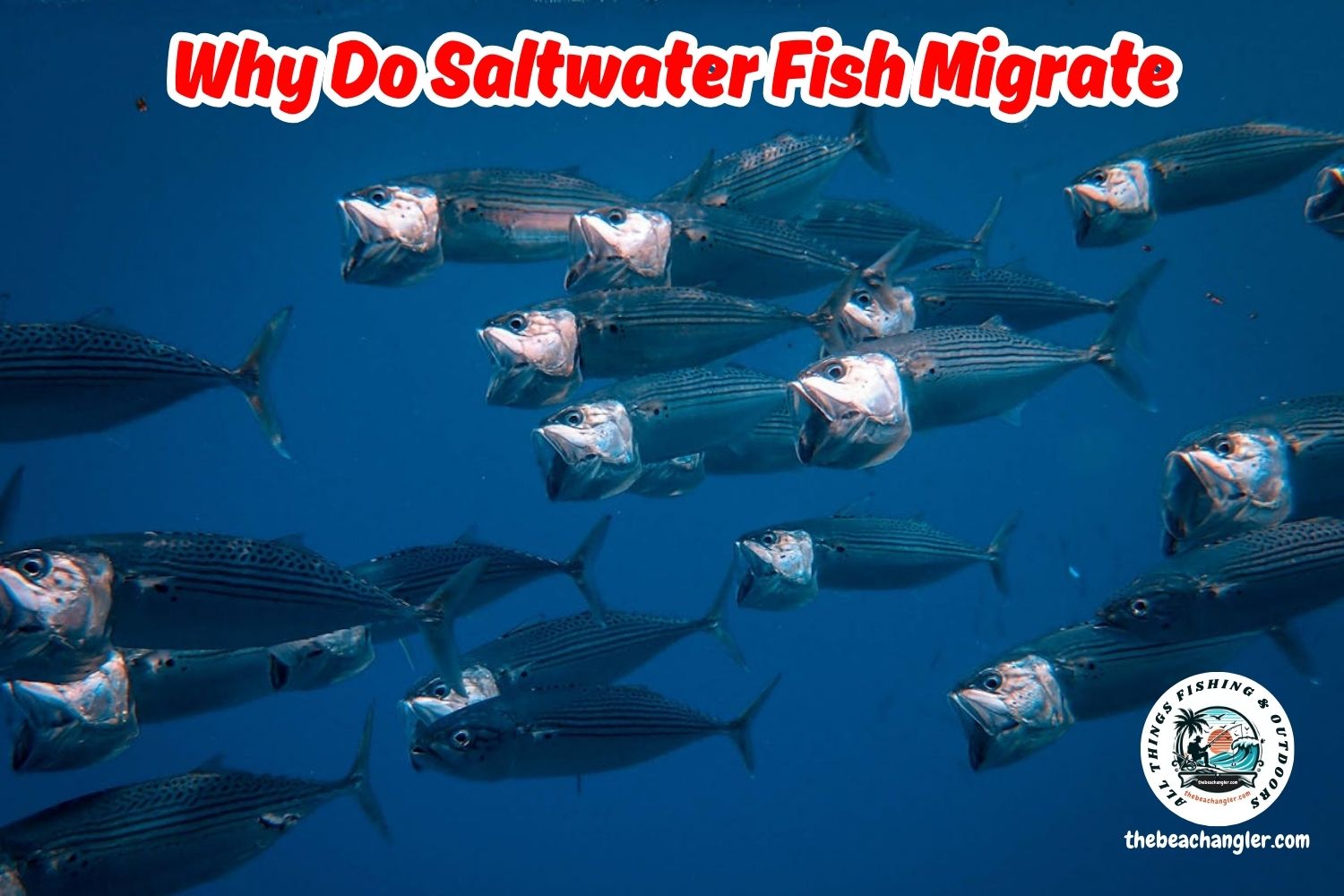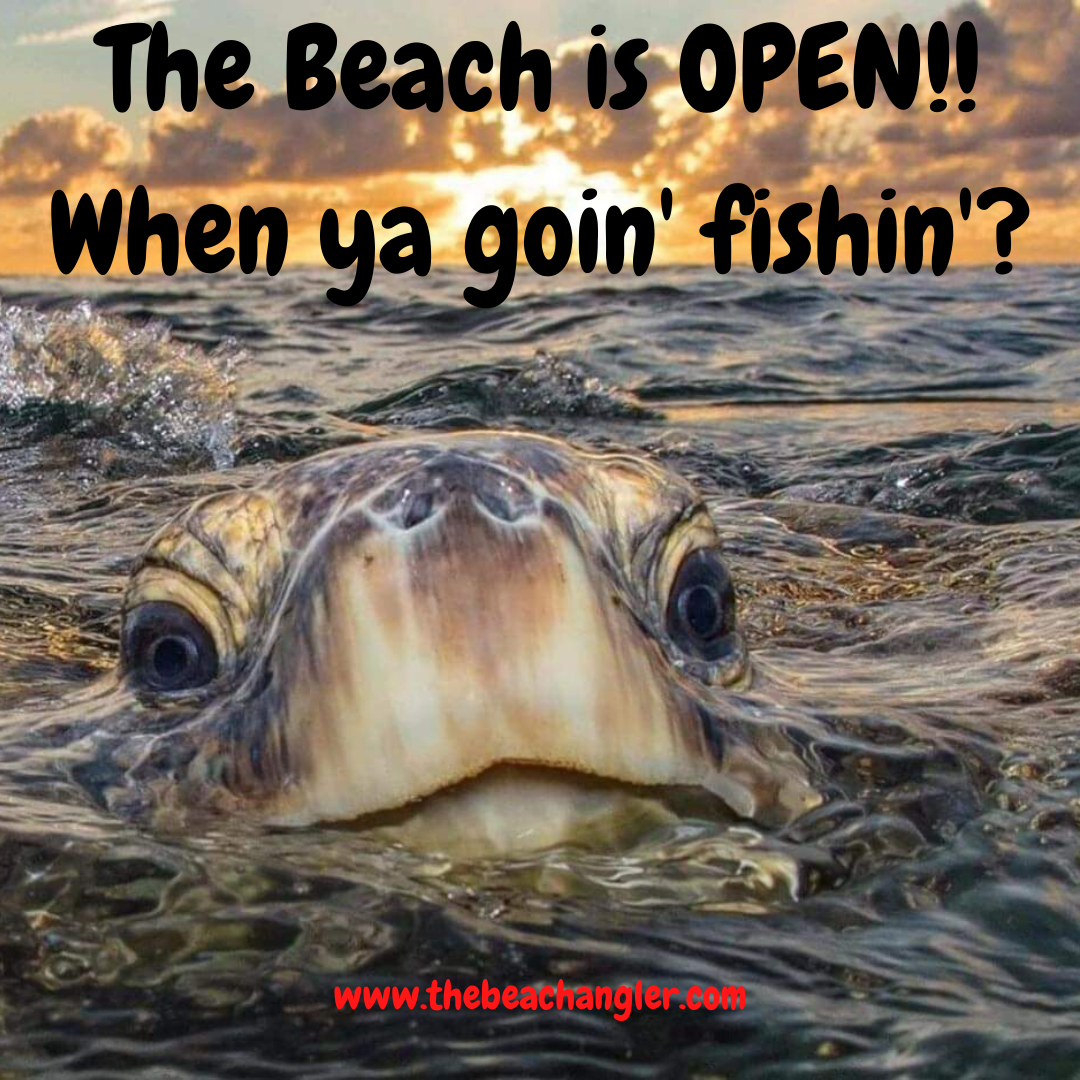Why saltwater fish migrate is a fascinating phenomenon that reflects nature’s adaptability and survival instinct. These migrations are crucial for the species’ survival, as they ensure that fish find the resources and conditions they need during different stages of their life. Understanding this behavior can provide valuable insights into the health and changes within ocean ecosystems.
QUICK LOOK 4 Reasons some Saltwater Fish Migrate
- Food Availability: Saltwater fish migration largely hinges on the pursuit of food. Fish often follow seasonal changes in prey populations or plankton blooms, traversing vast stretches of the ocean.
- Spawining: When it comes to continuing the species, many fish set out on remarkable migrations to specific spawning grounds. These journeys are all about securing the best possible start for the next generation.
- Reaction to Temperature: Temperature plays a pivotal role in the migration of saltwater fish. These creatures are highly sensitive to changes in their environment, often undertaking long journeys to seek out waters that suit their thermoregulation needs.
- Avoid Predators: Migration isn’t just about finding food or the perfect spot for the next generation. Often, it’s a strategic retreat from areas where predators are in high concentration. Fish have developed remarkable instincts for self-preservation, moving to safer waters when threats abound.
Migration patterns are intricate and can span thousands of miles. They involve seasonal shifts to optimize breeding, foraging, and other essential behaviors. While these journeys might appear random, they’re anything but. Each movement is a calculated step in a long-term survival strategy, driven by various environmental factors and biological imperatives.
Migration not only affects fish populations but also has a ripple effect across entire marine ecosystems. Fish play pivotal roles in their habitats; when they move, they can alter the balance of populations and nutrient cycles. This makes the study of migration not just an academic pursuit but a necessary component of marine conservation and management.
Several key drivers motivate these incredible journeys. The search for abundant food, locating optimal spawning grounds, evading predators, and adjusting to temperature changes all play a role. The strategies they’ve developed over millions of years tell a story of resilience and adaptation.
As we explore these reasons, keep in mind how interconnected ocean life is with our own. The health of fish populations can directly impact global seafood supplies and, by extension, human food security. Therefore, understanding migration patterns is not just about appreciating nature; it is about making informed decisions that support sustainable practices.
Food Availability: Following the Ocean’s Bounty
Saltwater fish migration largely hinges on the pursuit of food. Fish often follow seasonal changes in prey populations or plankton blooms, traversing vast stretches of the ocean. This constant search for nourishment is vital since it dictates where and when fish travel, ensuring they optimize their energy intake for growth and reproduction.
- The ocean doesn’t provide uniformly for all its inhabitants year-round. Just like agricultural seasons on land, the sea has its fertile periods, often triggered by changes in water temperature, currents, and daylight. These factors stimulate plankton blooms, which serve as a primary food source for many marine species. Consequently, fish align their movements with these blooms, forming a migratory pattern that matches the ocean’s productive cycles.
- To find their next meal, fish must tap into a deep well of evolutionary knowledge encoded in their instincts. They make significant journeys to places with abundant prey, demonstrating an uncanny ability to sense and gravitate towards food-rich areas. By doing so, they sustain not only themselves, but the larger ecosystem by supporting predator-prey dynamics and contributing to nutrient cycling.
- Certain fish species, such as herring and tuna, are renowned for their precise and synchronized migrations that follow these food trails. These migrations can also lead to natural gatherings of large fish populations, impacting fishing industries and local economies. Understanding these patterns can help fishermen align their activities with natural cycles, promoting sustainable practices that keep both ocean stocks and livelihoods plentiful.
For anyone interested in marine biology or sustainable fisheries, keeping track of these migrations is crucial. It allows for better predictions, offering a window into the health of marine environments and cautioning against overfishing in vulnerable periods. When managed correctly, respecting these ancient patterns benefits not just fish but all who rely on them.
Seeking Suitable Spawning Grounds: The Reproductive Journey
When it comes to continuing the species, many fish set out on remarkable migrations to specific spawning grounds. These journeys are all about securing the best possible start for the next generation. By traveling to specific locations, fish increase the chances of their young thriving and reaching maturity.
Choosing the right spawning ground is crucial. Many fish head to areas that offer safety from predators and environmental factors that could jeopardize early stages of life. For some, this means heading into rivers or secluded coastal spots, where the conditions are more favorable for eggs to hatch and fry to survive.
Some exceptional examples include salmon and eels. Salmon travel from the ocean into freshwater rivers to spawn. This journey involves overcoming numerous obstacles, from physical barriers to predators. Eels, on the other hand, undertake a reverse journey, moving from freshwater to the ocean to complete their life cycle. These dramatic migrations highlight the lengths to which fish will go to ensure their offspring have the best chance of survival.

By understanding these patterns, fisheries can determine critical spawning locations and work towards protecting these environments. Whether through regulation or conservation, safeguarding these areas is imperative to maintaining fish populations and ecological balance.
For anyone studying these phenomena or involved in fisheries management, it’s important to monitor these spawning migrations carefully. By doing so, you contribute to making informed decisions that help maintain healthy fish populations and secure the future of these incredible species.
Temperature plays a pivotal role in the migration of saltwater fish. These creatures are highly sensitive to changes in their environment, often undertaking long journeys to seek out waters that suit their thermoregulation needs.
- Fish don’t have the luxury of internally regulating their body temperature like humans. Instead, they depend on the external environment to provide the right conditions for their metabolic processes. This makes them particularly attuned to water temperatures, migrating to areas that align with their physiological requirements.
- Seasonal changes often drive these migrations, with fish moving to warmer or cooler waters as needed. For instance, in colder months, some species head towards warmer equatorial regions, while others might seek deeper waters where temperatures are more consistent.
- Such precise migrations underscore the significance of temperature for survival. It’s not merely about comfort; it’s crucial for optimal digestion, growth, and reproductive success. Fish avoid waters that are too hot or too cold as such conditions can negatively impact health and survival rates.
- For fisheries, understanding these temperature-driven migrations is essential for sustainable management strategies. Recognizing the climatic preferences of different species can aid in developing measures to protect fish populations, particularly in the face of climate change where water temperatures are more unpredictable.
Those involved in marine conservation should prioritize monitoring sea temperature changes and their effects on migration patterns. As climate shifts become more prevalent, fish will continue to adapt, making it ever more critical to stay ahead of these changes to support both marine biodiversity and human industries dependent on these resources.
Predator Avoidance: Safety in Movement
Migration isn’t just about finding food or the perfect spot for the next generation. Often, it’s a strategic retreat from areas where predators are in high concentration. Fish have developed remarkable instincts for self-preservation, moving to safer waters when threats abound.
The ocean is a vast and complex network of predator-prey interactions. Some regions can temporarily become hotspots for predators, especially during breeding or other life cycles, which compels fish to migrate. In doing so, they reduce the risk of predation, increasing their chances of survival.

Species like sardines exemplify this tactic with their incredible migration, known as the ‘sardine run,’ where massive schools travel along coastlines. This migration isn’t just a food journey—it’s also a survival tactic to escape predation in certain areas during specific times.
For those involved in coastal management or marine biology, understanding these migratory escape routes is crucial. It offers insights into the dynamic balance within marine ecosystems. By monitoring these movements, we can learn more about marine predators and prey interaction patterns.
For conservation efforts, these patterns highlight critical periods when fish are vulnerable. Protecting migratory pathways ensures that both prey and predator species maintain healthy population levels. Increasing awareness of these natural migrations can aid in designing marine reserves and safe corridors, mitigating human impact and fostering biodiversity.
Understanding Fish Migration Types: Anadromous and Catadromous Patterns
Fish migration isn’t a one-size-fits-all event; it’s fascinatingly diverse in its patterns. Two primary types of migration that stand out are anadromous and catadromous migrations, each showcasing unique life cycle adaptations that contribute to fish survival in different environments.
- Anadromous fish, like salmon, demonstrate a classic example of life spent mostly in saltwater but migrating to freshwater to spawn. This journey isn’t just remarkable for its physical demands—often involving navigation of river currents and natural barriers—but also for its ecological importance. Anadromous fish contribute significantly to nutrient cycles between marine and freshwater ecosystems, with their life and death providing crucial resources for a range of species.
- On the flip side, catadromous fish, such as the American eel, predominantly reside in freshwater until it’s time to reproduce, migrating to oceanic environments for spawning. This lesser-known mode of migration highlights the adaptability of certain species that have found evolutionary success by reversing the more common migration trend.
- Understanding these types of migrations is critical for effective fisheries management and conservation strategies. By recognizing the specific needs and challenges of anadromous and catadromous species, efforts can be tailored to protect critical habitats and ensure these migratory routes remain open and viable.
- Conservationists and policymakers should focus on preserving the delicate environments these fish depend on at different life stages. From ensuring rivers are free of human-made obstacles for anadromous species, to safeguarding oceanic breeding grounds for catadromous fish, informed decisions can help support their remarkable journeys.
The Broader Implications of Migration: Ecosystem and Human Impacts
Fish migrations hold significant importance beyond the spectacle of movement itself. They play a vital role in sustaining marine ecosystems and have direct implications for human communities reliant on them.
In marine ecosystems, migratory fish are key players in nutrient cycling and maintaining balance within food webs. Their movements help distribute nutrients across vast water bodies, supporting diverse sea life. This vital exchange underscores the interconnectedness of oceanic and freshwater ecosystems, highlighting the ecological services migratory fish provide.
For humans, especially those in coastal and fishing communities, these migrations are more than just a natural wonder; they’re lifelines. Many communities depend on migratory fish for economic support, with seasonal catches forming the backbone of local economies. However, this reliance also presents challenges. Overfishing during migration periods can lead to stock depletion, threatening both biodiversity and economic stability.
Climate change and pollution are increasingly complicating these migration patterns. Changes in sea temperature and acidity, along with habitat degradation, can disrupt migratory routes, posing risks to fish populations and the industries dependent on them. Recognizing these impacts is crucial in crafting adaptive strategies that promote resilience in fish populations amidst changing global conditions.
Efforts to safeguard migratory routes and manage sustainable harvesting practices are essential. This requires collaboration between scientists, policymakers, and local communities to institute practices that protect these vital pathways. The goal should be to balance human needs with conservation priorities, ensuring the longevity of both fish populations and the communities that rely on them.
Check Out Our Most Recent Articles:
- Z-Man Big BallerZ
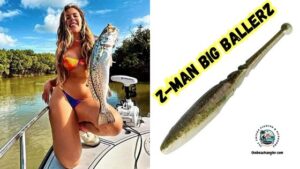
- 6 Tips for Choosing The Right Waders For Saltwater Fishing
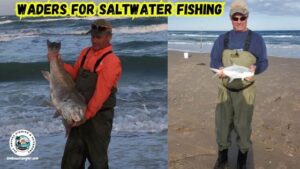
- Piscifun Salis X Trolling Reel Conventional Level Wind Reel

- Essential Baits And Lures For Inshore Saltwater Fishing

- Turtlebox Gen 3 Waterproof Speaker
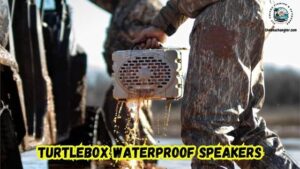
- Catch And Release Fishing For Goliath Grouper

As always, stay safe, enjoy the journey and please try to leave it cleaner than you found it. If you have any comments, questions, ideas, or suggestions please leave them in the comment section below and I’ll get back to you ASAP. You can follow us on Facebook: Rex The Beach Angler, Instagram: thebeachangler7, Twitter: @AnglerBeach, and YouTube: Man Art Creations.
P.S. – Thanks so much for checking out our blog, we really appreciate it. Just so you know, we may receive a commission if you click on some of the links that appear on our site. This helps us keep our content free and up-to-date for everyone. We appreciate your support!
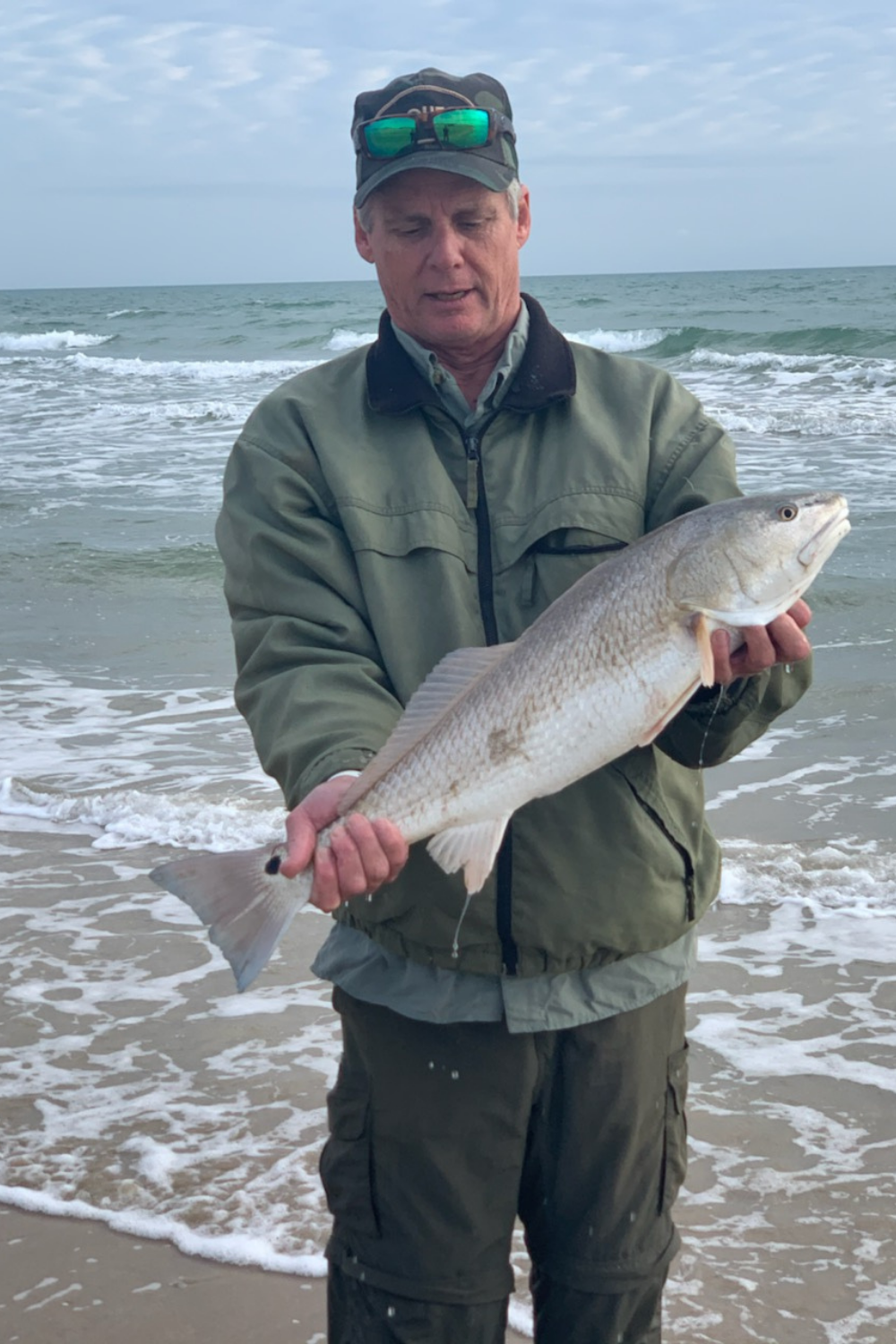
A life long surf fisherman with 50+ years of experience, I am also an avid hunter and outdoorsman. I will be sharing my passion for the outdoors with you so be prepared for hunting, fishing, camping, hiking and more. Along with gear reviews and the latest trends and innovations in the outdoor industry.
